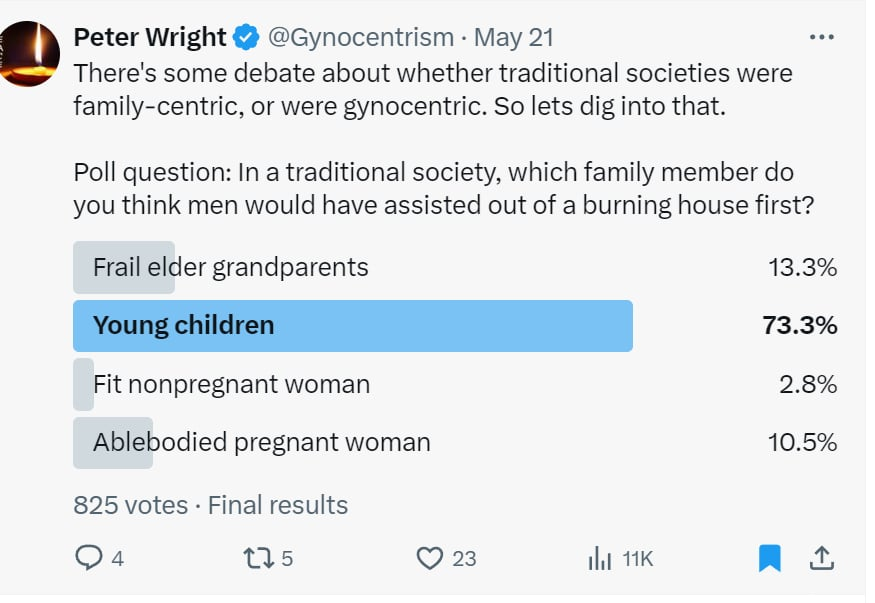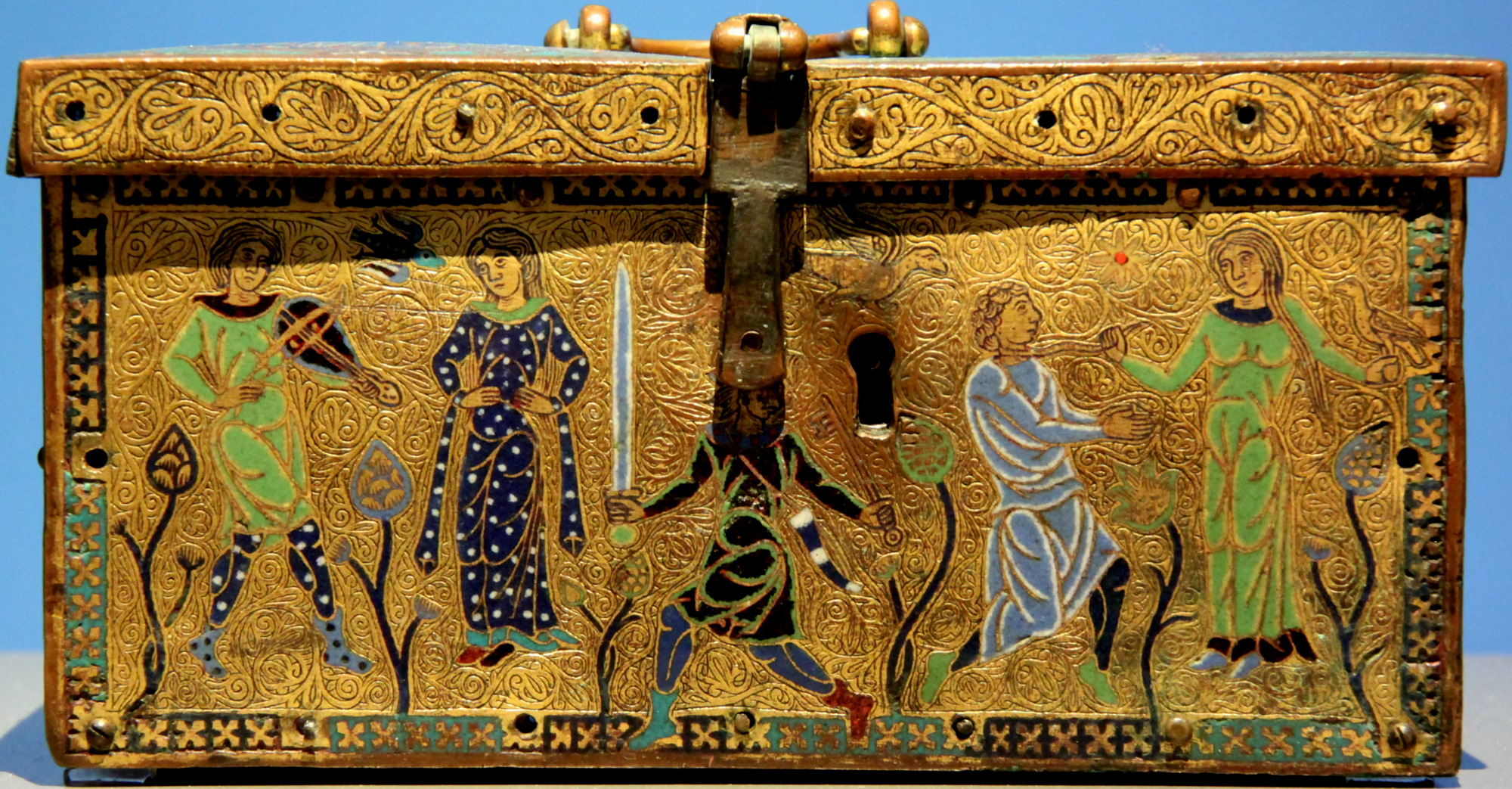Jana Xiolier posed the following questions to Peter Wright on July 4, 2024 .
Q. What do you think of our current culture and how it treats men?
A. In today’s culture, men are no longer appreciated for their presence or contributions and are routinely despised, especially when they fail to be of service to women and the State. This is because Western culture has lost its sense of family love – called storge by the Greeks – and in its place we now have atomised individuals driven by a narcissistic preoccupation with themselves; it’s a mindset that reduces men to mechanistic, utilitarian functionaries for the benefit of others, or to failures in that mandate.
Q. Do you feel fairly treated as a man?
A. If the benchmark for fairness is being treated with equal value, I think its reasonable to conclude that men are not – which I would say is demonstrated by the higher suicide rate of Western males. By way of comparison, Chinese women suicide in higher numbers than Chinese men, which also demonstrates the question of human value but with genders reversed.
Q. Do you think men have more power than women on a societal level?
A. Men more often hold the power of office, but what they do with that power deserves further consideration. To give an example, a local council where I live has eleven elected councillors (8 men and 3 women) who recently voted on whether to apportion money for celebrations of International Men’s Day in the city. The 8 men voted yes to funding, and the 3 women voted no! In a similar resolution voting to issue funds for International Women’s Day, the same 11 councillors voted yes, unanimously. My observation is that gendered use of power is generalizable to these examples; ie. men extend chivalry and consideration to women, but it is not reciprocated by women.
On a more general note I agree with Nancy Armstrong’s observation that there exists ‘two spheres’ of influence – one male sphere, and one female. She states that the interpersonal contract of romantic love and family relationships, which are directed largely by women, can often overrule the social contract controlled largely by male office holders. The result is that love can be the most powerful regulating convention between two parties – a possibility that is little considered by feminist writers in their rantings about males holding all the power in all domains.
Q. Do you think feminism is interested in equality?
A. Not at all. “Equality” on the feminist tongue serves as a euphemism for securing unearned and often unequal power for themselves, and for women more generally. This motive points to a definition of feminism that most people would agree with: i.e., feminism is the project for increasing the power of women.
Q. Does feminism help men?
A. Feminism sets out to actively harm men in many instances. Strangely enough, feminism may accidentally help men in some ways, especially when they get legislation passed for the purpose of empowering women, but men end up exploiting the same legislation to their own benefit. For example, legal redress for victims of sexual harassment or physical abuse, or even the ‘abuse excuse’ designed for women who murder a spouse are things men have used to their advantage, which elicited outrage by the feminist architects of these systems. In fact there has also been a trend of men claiming (but only on paper) that they are trans-women in order to secure multiple female-only privileges: for example, in Switzerland a man legally classified himself a woman on government documents and was able to retire younger and receive a pension at the same age as women. A man in Ecuador also changed his status to female, on paper, in order to gain custody of his children after divorce, as his country typically awards child custody to women. In Germany and also Norway, men have identified as women, on paper, in order to gain access to female-only university courses (eg. STEM quotas), or to gain access to female-only scholarships. These men did not “transition” in any material way, and were simply exploiting the gender privileges that have accumulated exclusively around the female sex.
Q. What do you think are the major issues facing men today?
A. First issues that come to mind are a lack of social valorization, which leads them to feeling worthless and paves the way for suicidal outcomes. A second major issue is the weight of imposed guilt that men carry around for being supposed members of a violent oppressor class. I could go on to list more men’s issues, but these two items are among the most crushing for men and boys, working in the background of their psyches, which means that rectifying these messages would lead to a number of improvements for men – and by extension for Western society as well.
Q. What do you think a true path towards equality between men and women would look like?
A. Socially that would look like an equal valuing of men and women, and would rest legislatively on ‘equality of opportunity’ in place of the current feminist push for ‘equality of outcomes’ (equity).
Q. Can you tell me of an experience of someone you know or yourself that was unfair and related to our culture’s treatment of men?
A. For me the heart breaker scenario is men in horrifically abusive relationships who can’t leave for good reasons, men who sometimes suffer the double horror of being falsely painted an abuser by the actual female abuser – then having the world come down on that same man and multiplying his pain. I’ve seen many men in this situation, and feeling alone is an understatement for what they are going through. If readers know any man in this position, I encourage you to consider helping them – whether materially, or even simply with some kind words and a listening ear which may prove the difference between him living versus suiciding.
Q. Do you know of any experiences of people who have experienced issues with women in their lives or with the court system etc etc.?
A. Too many to count, and I wager most readers here will feel the same – the system is rigged against men from beginning to end. Again, if you know any man going through a break-up and family courts, consider if you can offer them some kind of support.
Q. What do you think of traditional gender roles?
A. Another tricky question because there’s a variety of “traditional roles,” each one differing somewhat in its customs and conventions. For example in the West we have two primary traditionalisms: the first one is highly gynocentric (prioritising wife/woman somewhat over husband and children) and the second model is a non-gynocentric tradition which values gender roles on the basis that they exist as service roles within the wider family nexus; this is a model I can get behind. I wrote two detailed articles on traditional gender roles titled, The Tradwife Revisited and Anti-Gynocentrism Is The Only Anti-Feminism That Matters – which I’d encourage readers to read if they want more detail. To summarise those two articles, I praise traditional gender roles that are non-gynocentric and family oriented, with the caveat that we now live in a society that doesn’t support that model – in fact it actively tries to undermine it and rip it down.
Q. What do you think of intersectionality?
A. Advocates of the intersectional model claim its a way of seeing, and of being more inclusive toward marginalised people. In practice however, I’m seeing the opposite; the theory gets used for the sake of excluding people deemed too high on their ‘privilege wheel,’ and such exclusion is often based on wide categories like ‘whiteness’ or simply ‘maleness.’ On that basis I completely reject its interpretation & application.
Q. One last question. What would you say to the argument that the world is more child-centered than it is gynocentric? In that women are only centered, as much as they are, because they are useful to nature and that it is an attempt to center children, meaning that gynocentrism is an inaccurate way of describing society’s focus on the issues women face?
A. One popular hypothesis holds that women have always been more ‘centered’ than other family members who remained on the periphery, this being due to women’s usefulness in reproduction and in the raising of children. I reject this argument as another attempt to smuggle gynocentrism into families. The gynocentrism displayed today towards women who don’t have any children, and who plan to remain childless, is evidence that something other than child-centrism is at play in our centering of women. I think that something else amounts to a gendered narcissism that aims to place women ‘on a pedestal.’ Far from being an evolutionary adaptation for production of children, this practice results in the maladaptive outcome of less pairbonding between men and women, acrimonious relationships, higher divorce rates, and plummeting birth rates.
In traditional societies all members of the family are considered central to the functioning of the family unit, providing an environment of support for the raising of children. And if any member of the family suffered injury or needed extra support, it was based wholly on need and not on being female. For example, I recently conducted a poll on X that fleshes out people’s reactions to this question: “In a traditional society, which family member do you think men would have assisted out of a burning house first?” The answers to that question & the results are as follows:
In summary, all family members throughout our evolutionary history needed protection, or ‘centering’ to use your word, in order to be part of a strong, viable family team. But that isn’t called gynocentrism; it’s called storge as mentioned above. All family members were protected – as indicated in the poll. If women were vulnerable and needed protection occasionally, they would be. Men, too, were protected if they were injured, old, sick, or in need. Protection & provision has always been based on the shifting needs of various family members – whoever had the most immediate need was catered to, cared for and centered.
* * *
Jana Xiolier’s YouTube Channel: Women Against Feminism






